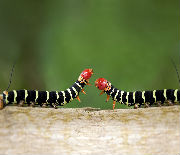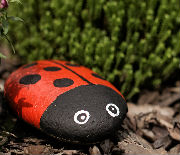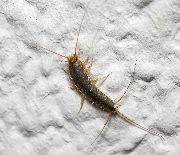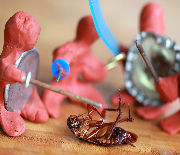
You stir awake, stretching under your quilted covers. A small red bump catches your eye on your arm… then another right above it.
For a beat, you simply stare at them, baffled. What did this? An eight-legged critter, wandering across you in the night or something grimmer – a bed bug burrowed somewhere in your bedding, feeding while you slept?
Neither thought sits right, really. Still, knowing how to tell if it’s a spider bite or bed bug bite can bring a bit of calm. Stick around to learn how to catch the early warnings, find relief from the itch, and recognise when professional help makes sense.
Table of Contents
How do you tell the difference between a spider bite and a bed bug bite?
At first glance, spider and bed bug bites appear identical. But the pattern, timing, how they feel, and where they show up tell the real story.
Arachnid bites are normally single marks – one larger bump that swells slightly, sometimes showing a faint puncture in the centre. You might even feel that sharp pinch when it happened.
Bed bug welts, though? They tend to show up in clusters or straight lines, usually overnight, on whatever skin was exposed while you were out.
The story behind each mark tells you plenty. Arachnids bite because they’re threatened or cornered. Bed bugs bite to eat. That one distinction changes everything about when, where, and how the marks surface.
| Feature | Spider Bite | Bed Bug Bite | |
|---|---|---|---|
| Number of Bites | Usually one mark caused by an accidental nip when the creature feels cornered | Often found in clusters or tidy lines, commonly called the ‘breakfast, lunch, and dinner’ pattern | |
| Size | Typically larger and more noticeable, with slightly raised or swollen skin | Small, even red bumps that look similar in size and shape | |
| Appearance | Red and slightly swollen, occasionally featuring a tiny blister or clear fang mark where it broke the epidermis | Small, round, itchy red spots lacking any visible puncture; they swell up if scratched | |
| Pain or Itchiness | Often stings or aches soon after the nip, easing after a few hours | Rarely painful at first but becomes very itchy later, often after waking | |
| Location on Body | Can show up anywhere, particularly under clothes, bedding, or shoes, where arachnids can get trapped | Usually found on exposed parts during sleep, like arms, shoulders, neck, face, or legs | |
| Timing of Bite | Can happen at any hour, often by accident when it is disturbed | Almost always occur at night while you’re asleep, as bed bugs feed in darkness | |
| Cause of Bite | A defensive reaction when one feels startled or stressed | Part of their feeding routine, as bed bugs rely on human blood to survive | |
| Other Symptoms | Mild redness, warmth, or swelling, and rarely nausea, dizziness, or fever in very sensitive people | Persistent itching and redness; scratching can lead to minor infections or a mild allergic reaction | |
| Risk Level (UK) | Very low. Only a few species, such as the false widow or woodlouse arachnid, can bite people, and most cases are mild | Moderate. Infestations can spread quickly and cause ongoing discomfort or sleep loss | |
| Treatment | Wash gently with soap and warm water, apply a cool compress or antiseptic, and seek medical help if the swelling worsens | Clean the area, apply calamine or anti-itch cream, and contact pest control to remove the infestation |
How to know if a bite is from a spider
Many people picture dramatic swelling or scary fangs, but in truth, spider bites are much milder. Serious ones are rare in the UK. The noble false widow and the woodlouse arachnids are among the few that can pierce human skin, and even they aren’t naturally aggressive.
A typical arachnid lesion appears as a single raised bump that can sting or feel warm straight away, easing within an hour or two.
You might notice a tiny puncture mark in the middle, helping you tell it apart from other insect welts. The skin can swell slightly or even form a small blister if you’re more allergic.
Check also: Types of Spiders Found in the UK
How to tell if bed bugs bit you
Bed bug blisters have a distinct pattern once you know what to look for. Unlike an arachnid’s lone mark, bed bug bites usually show up in clusters or tidy lines—often nicknamed the ‘breakfast, lunch, and dinner’ pattern.
Each bite is small, red, round, and intensely itchy, occasionally forming raised welts.
They typically surface on exposed areas during sleep: arms, legs, shoulders, or neck. Unlike welts from eight-legged creatures, they don’t have a central puncture mark.
Bed bugs numb the area while feeding, so you feel nothing initially. The itching develops in the morning. Search your mattress for small blood marks on the sheets, dark specks in the seams, or stale odours. Each signals bed bugs.
Check also: Bed Bug vs Flea Bites

Symptoms & reactions to both bites
Both spider and bed bug bites cause redness and itching, though your body could react differently. Arachnid bites cause mild swelling, tenderness, redness, and small blisters or bruises. Serious reactions are rare in the UK, but seek advice if you’re unwell.
Bed bug marks itch far more than they hurt. Scratching risks infection and redness on sensitive skin. Ongoing irritation may trigger mild allergies or sleep loss.
Key difference: spider bites hurt more than they itch, while bed bug welts itch intensely and rarely cause pain.
Keep calm while we handle the spiders
Our pest control specialists will inspect and treat your property for spiders safely
Contact usHow to treat the bites and when to seek help
Treating spider and bed bug bites is usually simple. Act early to stop them from getting worse.
For spider bites, wash the skin gently, apply a cold compress, and cover blisters. Antihistamines can ease itching, but seek medical advice if the redness spreads or you get a fever.
For bed bug bites, wash the area and apply an antiseptic or calamine lotion. Avoid scratching to prevent infection.
Real relief requires eliminating the pests – creams offer temporary comfort only.
Why do spiders and bed bugs bite people?
Understanding why these bites happen can make them seem a little less worrying. Spiders and bed bugs bite for completely different reasons.
Arachnids only nip humans when they feel trapped or startled. They don’t go looking for people and have no interest in feeding on us.
If one gets pressed against your skin or caught in clothing, it may give a quick nip before escaping. Once loose, it disappears, leaving only a tiny mark.
Bed bugs operate with purpose. They wait until you sleep, then drawn by your warmth, they feed briefly on your blood and slip back into hiding. Their welts are regular and repeated until you deal with the infestation.
Check also: Common Questions About Bed Bugs Infestations
Timing and occurrence
The easiest way to tell a spider bite from a bed bug bite is to recall when and where you got nipped.
An arachnid bump can show up almost any time, often by complete accident.
You might pick one up, pulling on a jumper, slipping into shoes left in a dark corner, or digging through a dusty box. Startled, it bites fast and bolts before you notice.
Bed bugs work another way. They stay hidden during daylight, tucked into seams, cracks, and furniture. Once night falls, they track your warmth, feed briefly, then slip away.
Check also: What Attracts Spiders in Your House?
A pest controller can deal with any spider or bed bug problem
Home fixes can help a bit with the itching or swelling, though they hardly ever sort out the real problem for good.
You might vacuum or spray corners and assume the problem is solved. Yet, spiders tend to creep back once you’ve stopped watching, and bed bug eggs cling stubbornly to fabric.
Both are tougher than most people realise, which is why spiders and bed bugs can keep turning up even after a big clean.
A proper pest controller has a knack for knowing where to look for bed bug infestations. They burrow into corners you’d rather avoid, spot the telltale signs you’d overlook, and handle the issue without fanfare.
While bed bugs thrive out of sight, spiders are the quiet tenants that make themselves at home in ceiling corners and garages. Most are harmless, but when webs start appearing faster than you can clear them, it’s time to call in the experts. Professional spider control and removal services ensure your home stays clear of unwelcome eight-legged guests.
Don’t let the bed bugs bite, literally
Book your professional bed bug control now and enjoy peaceful, itch-free mornings again.
Call usTakeaways
- A spider bite can simply be the result of bad timing. You brushed against one, and it struck before you caught on.
- Bed bugs are a different story altogether. They never bite by chance. Bed bugs have a meal plan and follow it. If you keep finding new marks each morning, it’s a fair sign that something more deliberate is going on.
- The timing gives the best clue. Arachnids bite when disturbed, whenever that might be. Bed bugs wait for the dark and feed quietly while you sleep, which somehow feels much worse, even if the mark itself is harmless.
- There’s comfort in knowing both problems can be sorted. A bit of cleaning, checking corners, and calling in a professional when needed will keep things calm and under control.









